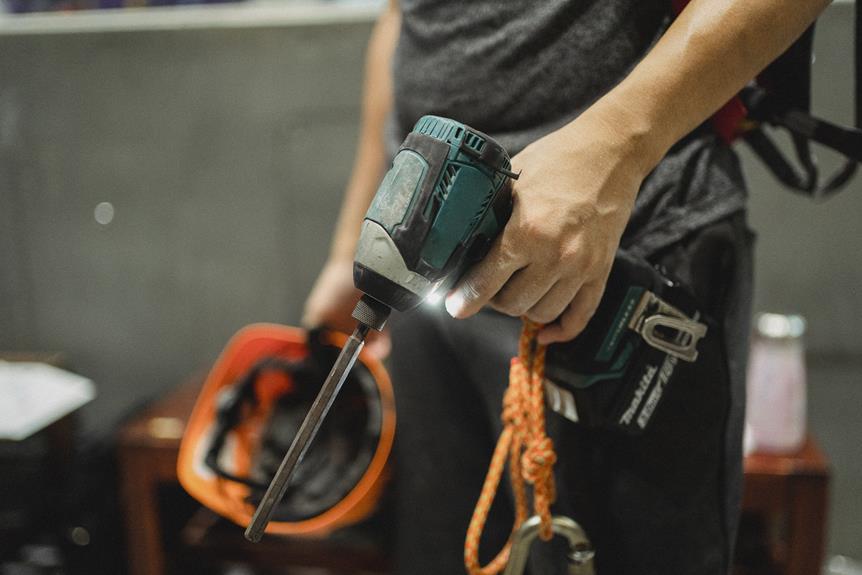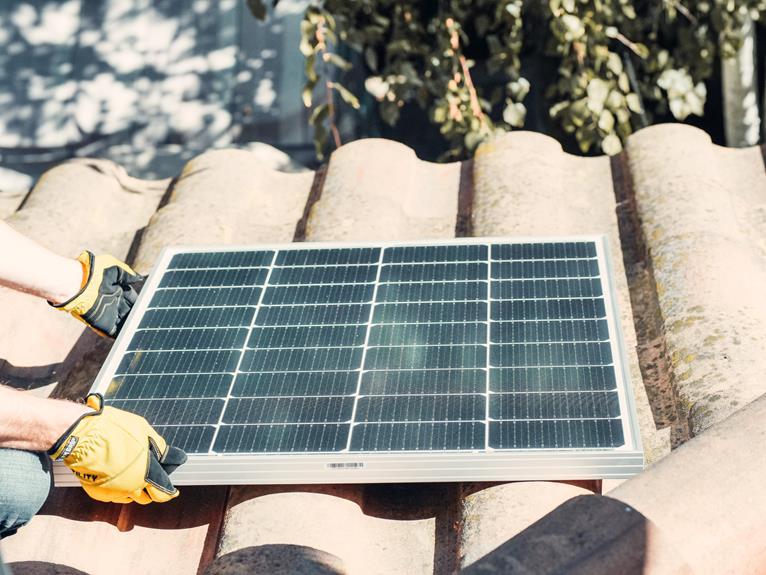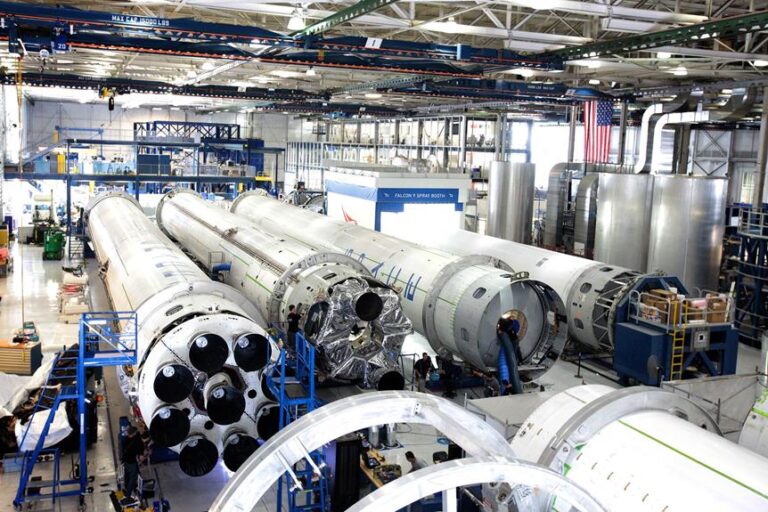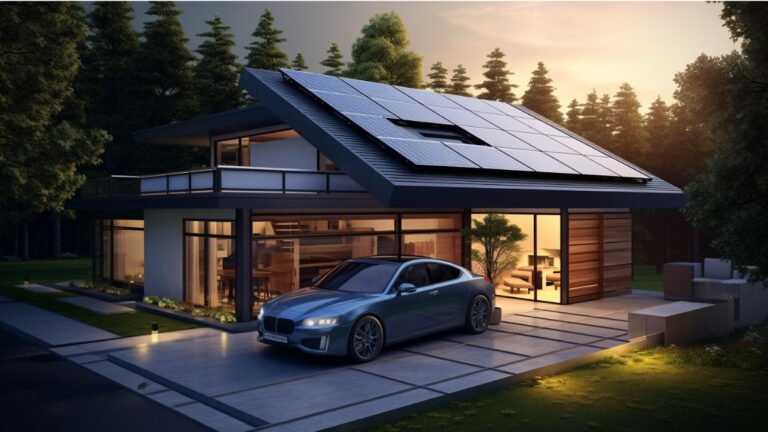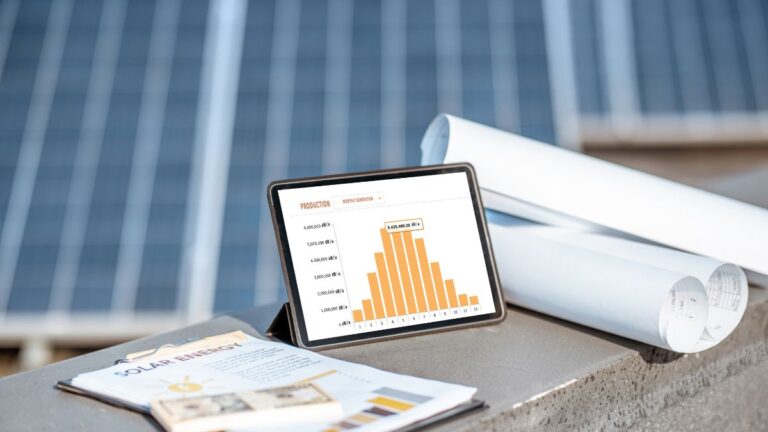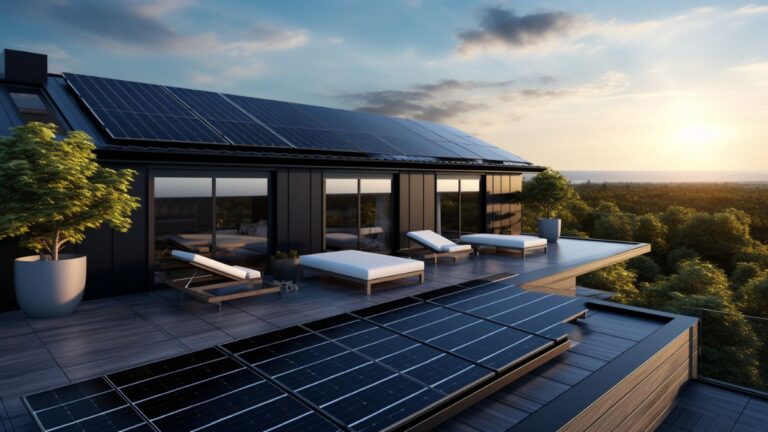13 Essential Safety Tips for Solar Power System Maintenance
You might think that maintaining a solar power system is a daunting task, but fear not! With these 13 essential safety tips for solar power system maintenance, you’ll be equipped to handle any maintenance job like a pro.
From assessing potential hazards to handling batteries safely, this article will provide you with the knowledge and tools you need to ensure the safety of your solar power system.
So let’s dive in and make sure your system is running smoothly, all while keeping safety as the top priority.
Key Takeaways
- Conduct a thorough potential hazards assessment
- Regularly inspect and maintain equipment
- Follow safety protocols and manufacturer’s instructions
- Implement proper ventilation techniques and monitor temperature within the system
Assessing Potential Hazards
To ensure your safety while maintaining a solar power system, it’s important to identify and address potential hazards.
Conducting a thorough potential hazards assessment is crucial in mitigating any risks that may arise during the maintenance process. Begin by examining the physical components of the system, such as panels, wiring, and inverters, to identify any signs of wear, damage, or loose connections.
Additionally, consider environmental factors like extreme weather conditions and the presence of nearby trees or structures that could potentially impact the system’s performance or pose a threat.
Once potential hazards have been identified, it’s essential to undergo appropriate safety training to learn how to handle and mitigate these risks effectively.
Proper Equipment and Tools
To ensure the proper maintenance of your solar power system, it’s crucial to have an equipment maintenance checklist and follow tool safety guidelines.
By regularly inspecting and maintaining your equipment, you can identify and address any potential issues before they escalate into major problems.
Additionally, adhering to tool safety guidelines will help prevent accidents and injuries while working on your solar power system.
Equipment Maintenance Checklist
Ensure you have the necessary tools and equipment for proper maintenance of your solar power system. Here is a checklist to help you stay organized and ensure your system runs smoothly:
- Multimeter: This tool allows you to measure voltage, current, and resistance, helping you troubleshoot any issues that may arise.
- Wire Cutters and Strippers: These tools are essential for cutting and stripping wires, ensuring proper connections and minimizing electrical hazards.
- Torque Wrench: Use a torque wrench to tighten bolts and nuts to the manufacturer’s specifications, preventing damage to your system.
By following an equipment maintenance schedule and using these tools, you can prolong the lifespan of your solar power system and reduce the need for costly repairs.
Additionally, familiarize yourself with troubleshooting techniques to quickly identify and resolve any issues that may arise. With the right tools and knowledge, you can maintain a reliable and efficient solar power system.
Tool Safety Guidelines
When conducting maintenance on your solar power system, it’s important to adhere to tool safety guidelines to ensure the proper use of equipment and tools. Assessing tool condition is vital before beginning any maintenance task. Inspect your tools for damage, such as cracks or loose handles, and ensure they’re in good working condition. Faulty tools can lead to accidents and injuries.
It’s also crucial to store your tools properly to maintain their durability and longevity. Keep them in a dry and secure place to prevent rust and damage. Organize your tools in a tool chest or toolbox to easily locate and retrieve them when needed.
Following these tool safety guidelines will help you maintain a safe and efficient solar power system.
Understanding Electrical Safety
For optimal safety while maintaining your solar power system, it’s important to have a clear understanding of electrical safety. Here are some key points to consider:
- Electrical grounding: Ensure that your solar power system is properly grounded to prevent electrical shock and reduce the risk of fire. Grounding provides a path for electrical current to safely flow into the ground.
- Safety protocols: Follow established safety protocols when working on your solar power system. This includes wearing proper protective gear, such as gloves and safety glasses, and turning off the power supply before performing any maintenance tasks.
- Regular inspections: Regularly inspect your solar power system for any signs of damage or malfunction. Look out for loose connections, frayed wires, or any unusual behavior. Promptly address any issues to prevent accidents and ensure the system’s optimal performance.
Working With High Voltages
To work safely with high voltages in your solar power system maintenance, it’s crucial to understand the potential risks and take necessary precautions. Assessing voltage risks is an essential step in ensuring your safety.
Before performing any maintenance tasks, it’s important to identify all potential electrical hazards and implement effective prevention measures. Make sure to turn off the main power switch and wear appropriate personal protective equipment, such as insulated gloves and goggles, when working with high voltages.
Inspect all cables and connectors for any signs of wear or damage before handling them. Use insulated tools and avoid touching any exposed electrical parts. Remember to always follow the manufacturer’s instructions and guidelines for safe maintenance practices.
Handling Batteries Safely
When it comes to handling batteries safely in your solar power system, there are a few key precautions to keep in mind.
Firstly, always ensure that you’re wearing the appropriate personal protective equipment, such as gloves and safety glasses, to minimize the risk of injury.
Additionally, it’s crucial to follow the manufacturer’s guidelines for battery storage and handling to prevent accidents and maintain the longevity of your system.
Battery Storage Precautions
How can you safely handle batteries when it comes to storing them in your solar power system?
Proper battery storage maintenance and following battery storage safety protocols are crucial to ensure the longevity and safety of your solar power system. Here are some essential precautions to consider:
- Proper ventilation: Ensure that batteries are stored in a well-ventilated area to prevent the buildup of harmful gases.
- Correct temperature: Keep batteries in a cool and dry environment to avoid overheating and damage.
- Secure storage: Store batteries in a secure and stable location, away from potential hazards such as flammable materials.
Following these precautions will help protect your batteries and maximize their performance, ensuring the efficiency and safety of your solar power system. By adhering to these guidelines, you can enjoy the benefits of renewable energy while reducing the risk of accidents or malfunctions.
Safe Battery Handling
Properly handling batteries is crucial for ensuring the safety and longevity of your solar power system. When it comes to battery disposal, it’s important to follow the proper procedures to protect the environment and prevent any potential hazards.
Many batteries contain toxic materials that can harm the environment if not disposed of correctly. It’s recommended to recycle your batteries instead of throwing them away in regular trash. Battery recycling facilities are equipped to handle the safe disposal of batteries and ensure that valuable materials are recovered and reused.
Managing Fire Risks
To minimize the risk of fire, ensure regular inspection and maintenance of your solar power system. Fire risks can arise from various factors, such as faulty wiring, overheating, or equipment malfunctions. Taking proactive steps to manage these risks is essential to protect your property and ensure the safety of those around you.
Here are some important measures to consider:
- Install fire extinguishers in easily accessible locations throughout your property.
- Develop an emergency response plan and make sure all members of your household are aware of it.
- Regularly inspect your solar power system for any signs of damage, such as frayed wires or loose connections.
Protecting Against Falls
Regularly inspecting your solar power system is important in protecting against falls and ensuring the safety of everyone involved. When working on rooftops or elevated surfaces, fall protection is crucial to prevent accidents and injuries.
One effective way to protect against falls is by using safety harnesses. These harnesses are designed to secure the worker and prevent them from falling off the roof or platform. They consist of straps and buckles that can be adjusted to fit the individual’s body securely. Safety harnesses should always be worn and properly attached to an anchor point that can support the worker’s weight.
Additionally, it’s important to regularly inspect and maintain the safety harnesses to ensure they’re in proper working condition. By implementing fall protection measures such as safety harnesses, you can significantly reduce the risk of accidents and promote a safe working environment.
Safeguarding Against Electric Shock
To protect yourself from electric shock, always wear proper personal protective equipment (PPE) when working on your solar power system. Here are some essential safety tips for safeguarding against electric shock:
- Perform an electrical hazard evaluation: Before starting any maintenance work on your solar power system, evaluate the electrical hazards present. Identify potential sources of electric shock, such as exposed wires or faulty equipment.
- Use insulated tools: When working on your solar power system, use insulated tools specifically designed for electrical work. Insulated tools provide an extra layer of protection against electric shock.
- Follow proper lockout/tagout procedures: Before performing any maintenance or repairs on your solar power system, ensure that it’s properly shut down and locked out. This prevents accidental energization and reduces the risk of electric shock.
Preventing Overheating and Fires
To prevent overheating and fires in your solar power system, it’s crucial to implement proper ventilation techniques. This involves ensuring that there’s adequate airflow around the components to dissipate heat effectively.
Additionally, regular inspection procedures should be followed to identify any signs of overheating or potential fire hazards.
Proper Ventilation Techniques
Ensure proper ventilation to prevent overheating and fires in your solar power system. Proper ventilation maintenance is crucial for the safe and efficient operation of your system. Here are some important techniques to follow:
- Regularly inspect and clean the ventilation system to remove any dust or debris that may obstruct airflow.
- Check for any signs of damage or wear, such as loose or broken vents, and repair or replace them as needed.
- Monitor the temperature within the system and ensure it stays within the recommended range to prevent overheating.
Ventilation system troubleshooting is an essential part of solar power system maintenance. By maintaining proper ventilation and addressing any issues promptly, you can reduce the risk of overheating and fires, ensuring the longevity and safety of your solar power system.
Regular Inspection Procedures
Perform regular inspections to detect and prevent overheating and fires in your solar power system.
Regular assessments are essential to maintaining the safety and efficiency of your system. During these inspections, carefully examine all components, including panels, inverters, and wiring, to ensure they’re in good condition and free from any signs of damage or wear.
Pay particular attention to any potential sources of overheating, such as loose connections or blocked ventilation. Inspect the wiring for any signs of overheating, such as melted insulation or discoloration.
Additionally, ensure that all safety precautions, such as proper grounding and surge protection, are in place and functioning correctly.
Fire Prevention Measures
Regularly inspecting your solar power system is crucial for preventing overheating and fires. To effectively assess fire risks and ensure the safety of your system, consider the following measures:
- Keep the area around your solar panels clear of any flammable materials, such as dry leaves or debris.
- Conduct regular checks to ensure that all electrical connections are secure and free from any signs of overheating or damage.
- Install a fire extinguisher in a visible and easily accessible location near your solar power system.
By implementing these fire prevention measures, you can significantly reduce the risk of overheating and fires in your solar power system.
Remember to familiarize yourself with proper fire extinguisher usage and maintenance to ensure you’re prepared in case of an emergency.
With regular inspections and preventative measures, you can enjoy the benefits of solar power while keeping your property safe.
Dealing With Extreme Weather Conditions
To effectively maintain your solar power system in extreme weather conditions, it is important to regularly assess and address potential risks. Extreme weather, such as hurricanes, snowstorms, or high winds, can pose a threat to the integrity and functionality of your solar panels and other system components.
Implementing proper equipment protection measures and preparing for extreme weather events will help ensure the longevity and efficiency of your solar power system. Consider the following table for a quick reference guide on how to protect your solar power system in extreme weather conditions:
| Extreme Weather | Equipment Protection Measures |
|---|---|
| Hurricanes | Secure solar panels and inverters to withstand strong winds. Trim nearby trees or branches that may pose a risk. |
| Snowstorms | Clear snow from solar panels to maintain optimal performance. Install a snow guard to prevent snow build-up. |
| High winds | Reinforce mounting structures and connections. Inspect and tighten all fasteners regularly. |
| Hailstorms | Install hail-resistant solar panels or protective covers. Conduct regular inspections for any signs of damage. |
Ensuring Proper Ventilation
To ensure proper ventilation for your solar power system, assess and address potential risks that may affect the functionality and efficiency of your system. Proper ventilation is crucial for the performance and longevity of your solar panels.
Here are some ventilation techniques and maintenance tips to keep in mind:
- Clean the area around your solar panels regularly to prevent the buildup of dirt and debris that can block airflow.
- Trim any nearby trees or shrubs that may obstruct the airflow to your panels.
- Check the vents or openings in your solar panel mounting system to ensure they’re clean and free from any obstructions.
Proper Waste Management
Dispose of waste from your solar power system safely and responsibly. Proper waste management is essential to minimize the environmental impact of solar power systems. When it comes to waste disposal, it is crucial to follow the guidelines provided by your local authorities.
Here is a table outlining the different types of waste generated by solar power systems and the recommended disposal methods:
| Waste Type | Recommended Disposal Method |
|---|---|
| Solar panels | Contact local recycling centers for proper disposal |
| Batteries | Take them to a hazardous waste facility or a battery recycling center |
| Inverters | Recycle them through an e-waste recycling program |
Maintaining Safety Documentation
Keep your safety documentation up to date to ensure the proper maintenance of your solar power system. Maintaining accurate and comprehensive safety documentation is crucial for the safe and efficient operation of your system. Here are three important reasons why you should prioritize the maintenance of your safety documentation:
- Compliance: Up-to-date safety documentation ensures that you’re in compliance with all relevant regulations and standards. It helps you demonstrate that you have taken necessary precautions to protect yourself, your team, and the environment.
- Safety Training: Safety documentation serves as a valuable resource for conducting safety training sessions. It provides guidance on potential hazards, safety procedures, and emergency protocols, allowing you to effectively train your team and minimize the risk of accidents.
- Risk Assessment: Regularly updating safety documentation enables you to assess and mitigate potential risks associated with your solar power system. It helps identify areas that require attention or improvement, allowing you to proactively address safety concerns before they become major issues.
Conclusion
By following these essential safety tips, you can ensure the smooth and secure maintenance of your solar power system. Remember, safety is paramount when dealing with high voltages and extreme weather conditions.
Proper equipment and tools, understanding electrical safety, and handling batteries safely are crucial. Maintaining proper ventilation, waste management, and safety documentation are also key. Stay vigilant and protect yourself while continuing to harness the power of solar energy.
